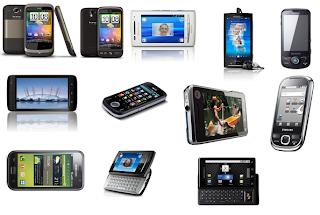Portable hard drives are now available in higher capacities and with the blazingly fast USB 3.0 interface. Here are some great options to carry all your movies and music along.
USB flash drives are most convenient for carrying small amounts of data, but when it comes to huge volumes of data, an external hard drive is the best option. External drives and multi-drive NAS devices with 3.5-inch form factor are great for storing terabytes of data. However, if you wish to carry up to 1 TB of data in a tiny device with instant connectivity, the only solution is a 2.5-inch portable drive. These tiny data banks don’t need an external power source and can transfer data at up to 30 MB/s. The latest generation drives use the new USB 3.0 interface, which can transfer data at up to 95 MB/s, which is as fast as a desktop hard drive. However, your motherboard should be equipped with USB 3.0 ports. If you have an older PC, you can still use it on the USB 2.0 port and harness the advantages of USB 3.0 when you upgrade. The prices of drives have also reduced, and today, buying a 500 GB drive is wiser than buying a 320 GB or a 250 GB drive because the price difference isn’t much.
In this roundup, we compared portable hard drives with capacities ranging from 500 GB to 1.5 TB. You’ll find all the information you need to pick the fastest drive, the one that offers the best value, or the one that offers the most attractive price-per-GB ratio.
SILICON POWER STREAM S10
The Stream S10 from Silicon Power has a curvy design with a rugged but dual-tone glossy exterior. It looks great and will definitely turn a few heads. The drive is built with 640 GB of internal storage, which is roomy enough for backing up most of your everyday documents as well as for casual media dumping. The Stream S10 sports a USB 3.0 interface port and is backward compatible with older USB 2.0 ports as well. The drive’s
performance suits those who are always in a rush and need to backup their data in a jiffy. On the performance front, if you have a look at the tables, the Stream S10 scores a splendid 99 out of 100. With scores almost equivalent to external drives with an eSATA interface or an internal desktop SATA hard drive, the Silicon Power Stream S10 is truly a great performer. The synthetic and real-world scores reveal this drive to be the ideal choice for those who usually backup large files and need it done fast. Sadly, the drive packs only a one-year warranty, while the rest of the contenders offer three years for their products. Also, bundled along with the drive is a backup and synchronization software for documents and email.
performance suits those who are always in a rush and need to backup their data in a jiffy. On the performance front, if you have a look at the tables, the Stream S10 scores a splendid 99 out of 100. With scores almost equivalent to external drives with an eSATA interface or an internal desktop SATA hard drive, the Silicon Power Stream S10 is truly a great performer. The synthetic and real-world scores reveal this drive to be the ideal choice for those who usually backup large files and need it done fast. Sadly, the drive packs only a one-year warranty, while the rest of the contenders offer three years for their products. Also, bundled along with the drive is a backup and synchronization software for documents and email.
Verdict: A speedy drive with excellent linear write speeds. Ideal for daily backups.
For: Blazing performance, good build quality, looks good.
AGAINST: Only one-year warranty.
WD MY PASSPORT ESSENTIAL
The Western Digital My Passport Essential 500 GB won the Best Value title purely because it carried the lowest price amongst the contenders. The drive sports a very good build quality, with a rugged and sturdy case, but the high-glossy shell is a disappointment as it is very easily prone to scratches and fingerprints. Therefore, using it on a daily basis can
tarnish its exterior, making it look older than it actually is. The slim form factor and light weight make this drive a great choice for high portability. Though the WD My Passport Essential features a USB 3.0 port, performance is below average, but it is still twice as fast as conventional drives that feature the USB 2.0 interface. It was the lowest performing drive in the USB 3.0 category. The performance tests revealed the drive’s read speeds touching 62 MB/s and write speeds at 68 MB/s only (actual real-world performance). Based on the scores we received, the drive seems good enough for storing and porting media files and basic documents. The WD My Passport Essential carries a three-year warranty and bundles the WD SmartWare Software for intelligent and easy backups of your personal data.
tarnish its exterior, making it look older than it actually is. The slim form factor and light weight make this drive a great choice for high portability. Though the WD My Passport Essential features a USB 3.0 port, performance is below average, but it is still twice as fast as conventional drives that feature the USB 2.0 interface. It was the lowest performing drive in the USB 3.0 category. The performance tests revealed the drive’s read speeds touching 62 MB/s and write speeds at 68 MB/s only (actual real-world performance). Based on the scores we received, the drive seems good enough for storing and porting media files and basic documents. The WD My Passport Essential carries a three-year warranty and bundles the WD SmartWare Software for intelligent and easy backups of your personal data.
Verdict: An ultra-portable 500 GB external storage drive with a USB 3.0 port.
For: Good price, sturdy shell, small form factor.





.jpg)

